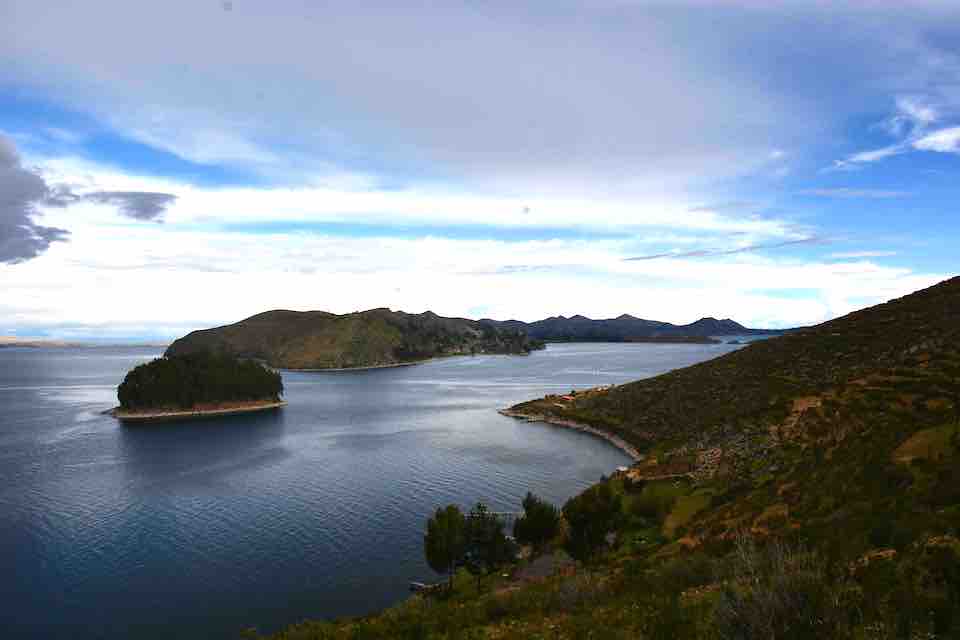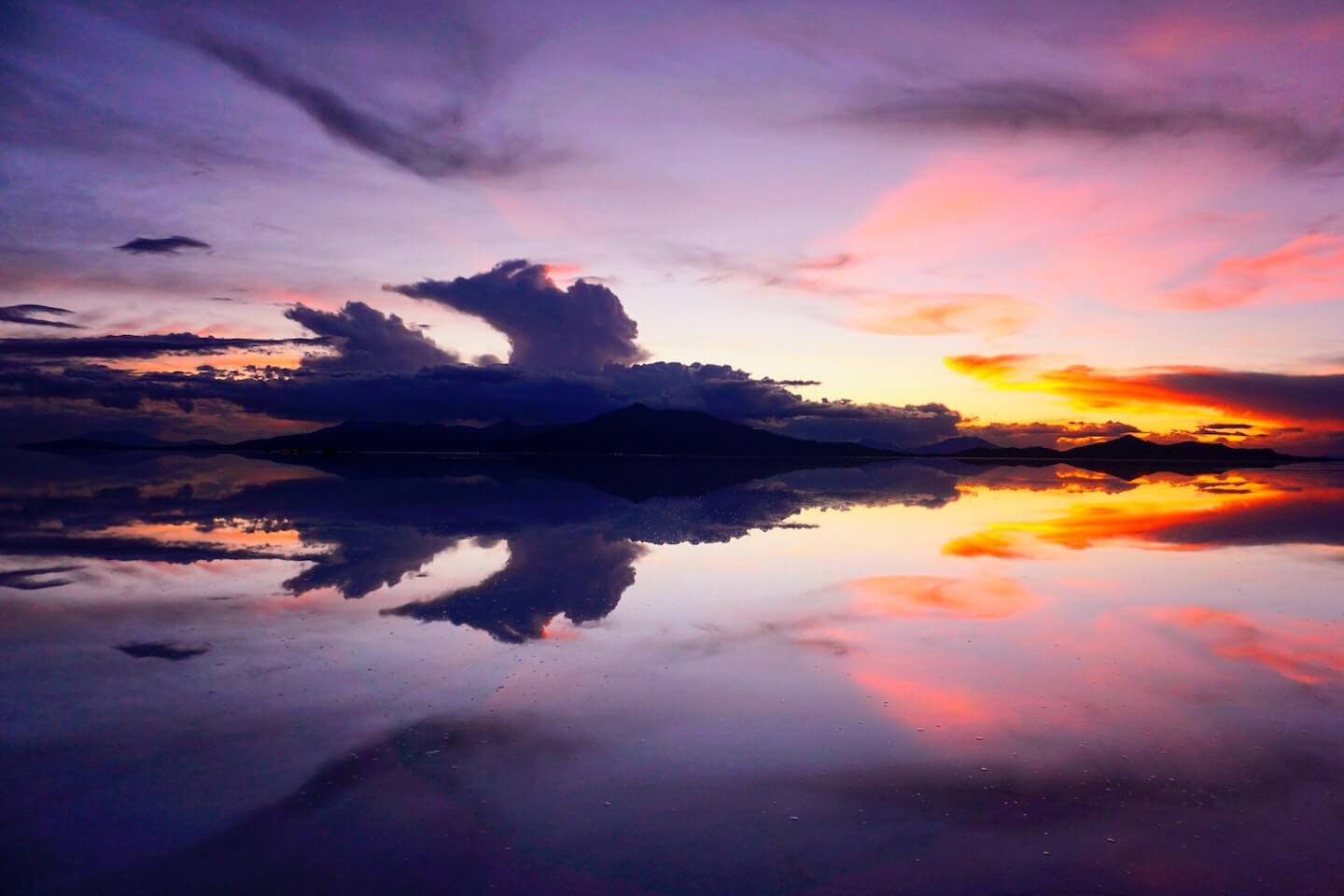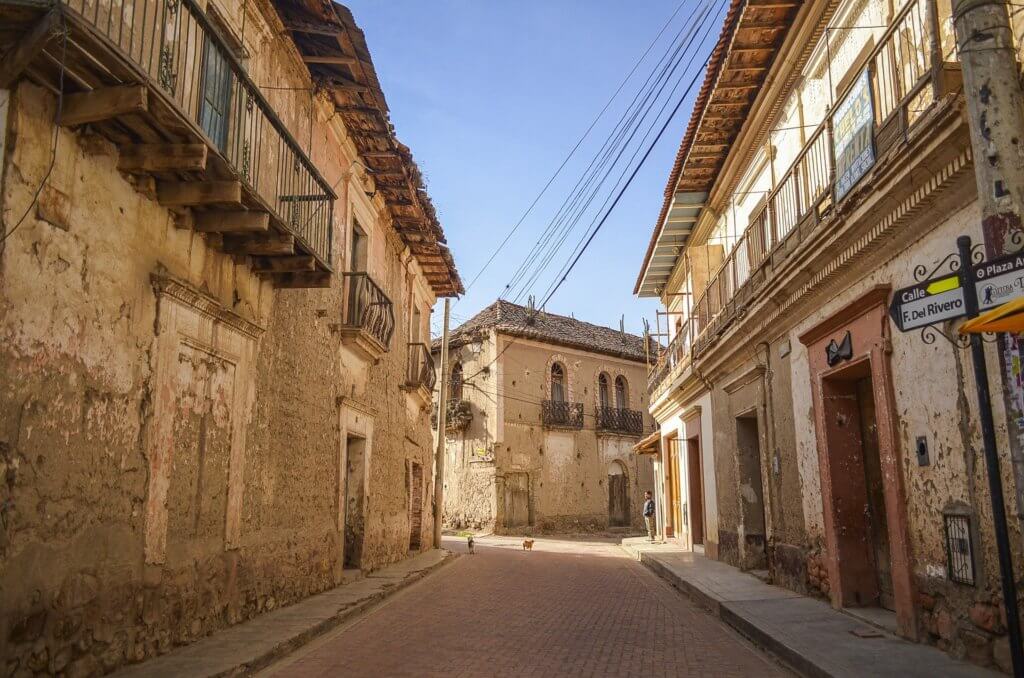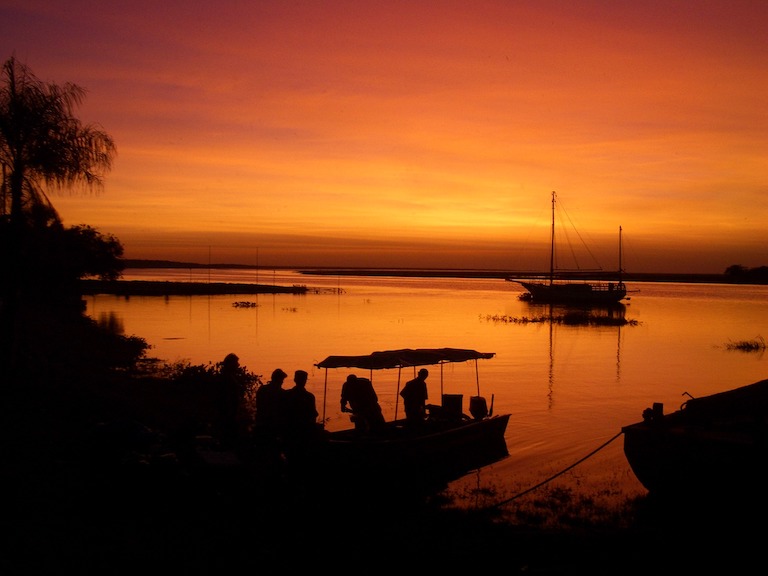
Bolivia may be one of the poorest countries in South America. Still, its cultural wealth, the vastly differing Amazonian and Andean landscapes, and the remnants of mysterious ancient civilizations make it an incredibly rich and exciting destination for all adventure lovers.
Bolivia, landlocked at the heart of Andean Latin America, remains something of a well-kept secret. Throughout the country’s colonial history, Bolivia was known as ‘Upper Peru’ until after Simon Bolivar led the country to independence in 1825 when it was named in his honor. Today, those who venture beyond the mass tourism of neighboring, modern-day Peru will find a country offering a far more authentic take on Latin culture. While upscale hotels and international-standard restaurants exist, there are also plenty of long bus journeys along with mountain passes, rough-and-tumble jeep trips across empty landscapes, and chilly nights in low-frills hotels under llama-wool blankets. The infrastructure may need some work, but the country’s innate charm lies in its staggering breadth of contrasts: the clash of indigenous and European culture, the sweep of the landscape from jungle to high-altitude mountains, and the diversity of activities from adrenaline sports to ancient monuments. With around two-thirds of the indigenous origin population, the authentic culture has not been watered down. Native religions, dialects, clothes, music, and medicines all form part of the daily life on the street. While the Spanish influence is vital in the colonial architecture, most notably in Sucre, Bolivia has remained close to its roots, electing its first-ever indigenous president, Evo Morales, in December 2005.

A LIVING CULTURE TO BE DISCOVERED
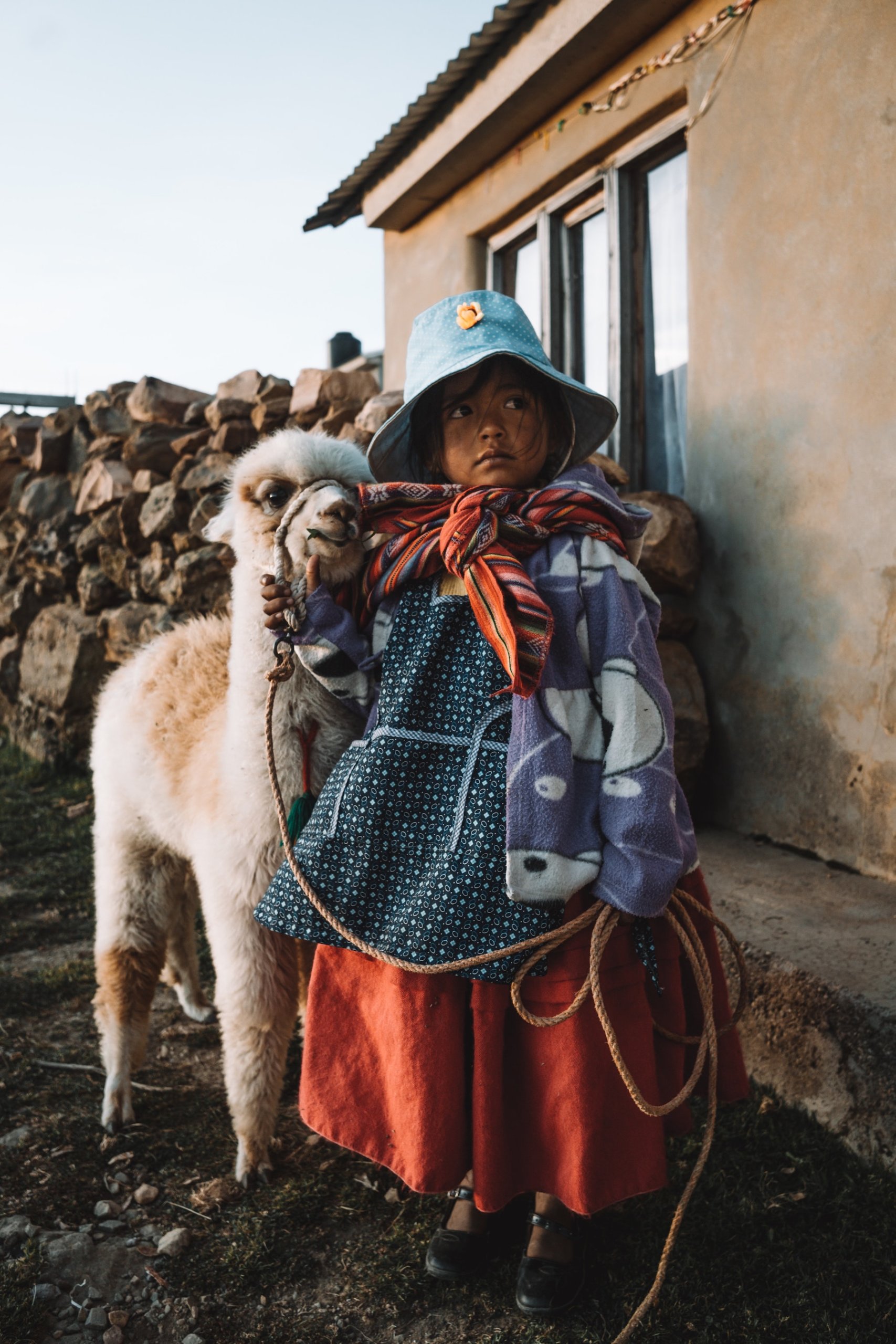
Here flamingos feed on red and green lakes rimmed by volcanoes, where Dali-esque rock structures dot the Altiplano, and where waterfalls crash down on one of the world’s most dangerous roads. n Bolivia’s breathtakingly high capital, La Paz, indigenous women in traditional bowler hats and brightly-colored skirts sell absolutely everything you could need. Much of Bolivia is tropical lowland, a lush carpet stretching to Brazil. Twisting roads thread their way down from the high Andes’ snowy peaks to steaming jungles, providing excellent – if dangerous – mountain biking. In Bolivia’s north, Lake Titicaca is the highest navigable lake in the world. The old colonial town of Potosí; hosts a silver mine, while a train graveyard lies on the edge of the Salar de Uyuni, the world’s highest and largest salt flat. Amboró National Park encompasses three ecosystems – the Amazon basin, the Andes’ foothills, and the Chaco plain, and is home to thousands of insects, birds, and plants.
build your clients trip with our experts

Explore the highlights of Bolivia
La Paz
It is the highest capital in the world, at just over 3,600m (2Mi). In La Paz, the Western world’s new customs collide and coexist with the Aymara and the Quechua’s old traditions. Hi-tech international banks and government offices rub shoulders with vibrant street markets that still play a central role in the indigenous’s lives.
Lake Titicaca & Sun Island
The sacred and mystic Lake of the Inca is the highest navigable surface in the world. This magic territory harbors in its breast the archaeological complex of the oldest civilization on the continent. Venture to the visionary Island of Sun to admire the spectacular scenery and ancient Incan ruins.
Uyuni Salt Flats
The brightest spot on earth visible from space, this white salt desert hosts many natural wonders: fascinating colored lagoons, exotic rock formations, a diversity of animals, intact natural environment, volcanic craters and fumaroles blowing steam reaching up to 100 meters in height… Prepare to be amazed!
Santa Cruz
Santa Cruz is hugely popular as a place to visit or live because of its tropical desert climate created by its low-lying location and sunny skies year-round. This developed city is a fascinating mix of old and new, with high rise buildings that define the skyline juxtaposed with colonial churches and administrative buildings at the street level.
Andes – Sucre & Potosi
“The White City” of Sucre has been immaculately preserved and oozes colonial charm with red-tiled roofs, baroque churches, and leafy plazas. Potosi embodies the rise and fall of Bolivia’s industrial history. Once a thriving mining town, it is now a fascinating example of colonial decline peppered with church lined cobbled streets.
Bolivian Amazon
Two areas to visit in the Bolivian Amazon: The Pampas & Jungle. The pampas may not be seem like a typical “Amazon experience”, a wetland savannah bordering the Amazon basin. In the Amazon jungle, hosts a number of activities like jungle treks, piranha fishing, cultural encounters with communities, and botanical medicines.
destination map

| Title | Address | Description |
|---|---|---|
La Paz | La Paz, Bolivia | Is the highest capital of the word, situated at just over 3,600m (2Mi). In La Paz the new customs of the Western world collide and coexist with the old customs of the Aymara and the Quechua. Hi-tech international banks and government offices rub shoulders with vibrant street markets that still play a central role in the lives of the indigenous. Read more… |
Lake Titicaca & Sun Island | Isla del Sol, Bolivia | The sacred and mystic Lake of the Inca is the highest navigable surface in the world. This magic territory harbors in its breast the archaeological complex of the oldest civilization on the continent. Venture to the visionary Island of Sun to admire the spectacular scenery and ancient Incan ruins.Read more… |
Uyuni Salt Flats | Uyuni, Bolivia | The brightest spot on earth visible from space, this white salt desert hosts many natural wonders: fascinating colored lagoons, exotic rock formations, a diversity of animals, intact natural environment, volcanic craters and fumaroles blowing steam reaching up to 100 meters in height… Prepare to be amazed! Read more… |
Santa Cruz | Santa Cruz de la Sierra, Bolivia | Santa Cruz is hugely popular as a place to visit or live because of its tropical desert climate created by its low-lying location and sunny skies year-round. This developed city is a fascinating mix of old and new, with high rise buildings that define the skyline juxtaposed with colonial churches and administrative buildings at the street level. Read more… |
Andes – Sucre & Potosi | Sucre, Bolivia | “The White City” of Sucre has been immaculately preserved and oozes colonial charm with red-tiled roofs, baroque churches, and leafy plazas. Potosi embodies the rise and fall of Bolivia’s industrial history. Once a thriving mining town, it is now a fascinating example of colonial decline peppered with church lined cobbled streets. Read more… |
Bolivian Amazon | Pampas, Bolivia | Two areas to visit in the Bolivian Amazon: The Pampas & Jungle. The pampas may not be seem like a typical “Amazon experience”, a wetland savannah bordering the Amazon basin. In the Amazon jungle, hosts a number of activities like jungle treks, piranha fishing, cultural encounters with communities, and botanical medicines.Read more… |
Depending on your client’s preferences, we can help you determine the best experiences tailored for your clients. From where to visit, when to go, what to do and how to get there safely, our travel experts will help you create an experience your clients will love.
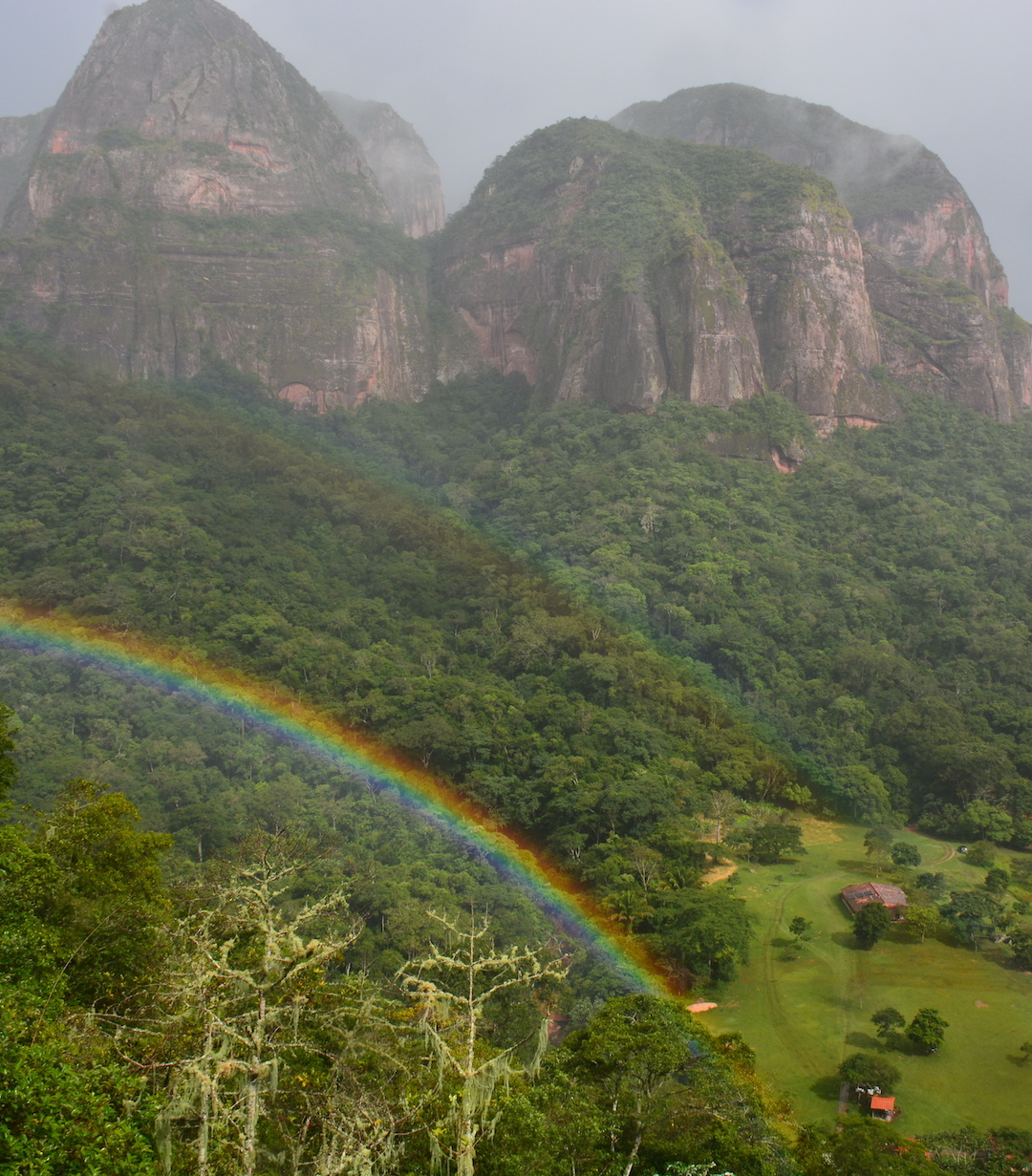
at a glance:
SEASONS & PEAKS
Spring (Sept-Nov) – Best Weather. Great time to go.
Summer (Dec-Feb) – Hot & Sticky – Avoid the North Side, flooding.
Autumn (Mar-Apr) – Fewer Crowds – Great time to go. See Wineries!
Winter (Jun-Aug) – Icy and Snowy – Ski lodges are open.
High season: Late Nov-Feb & July – Peak Pricing
Shoulder season: Sept-Nov & Mar-May
Low season: June & August – Low Pricing
Best times to
visit Bolivia
June through July is dry and sunny but bitterly cold in the highlands; this is an excellent time to travel – as long as you have packed well. While the days are still warm, nighttime temperatures can drop to -20°C, and some tours have pre-dawn starts. Brrr! November to March is the rainy season, which disrupts both road and air travel, particularly from January onwards. As roads can flood, landslides are common, and fog and cloud can make driving or hiking in the mountains dangerous. January to March is not the best time to visit Bolivia if you plan to do outdoor activities such as hiking or cycling. However, the dusty landscape does make an excellent transition to a green, and wildflowers bloom on the mountain slopes. The majority of festivals fall from February to April, such as Carnival and Easter (Holy Week). These could form an essential part of your trip or be an inconvenient disruption to travel if roads or attractions are closed. So check with your operator before you go!
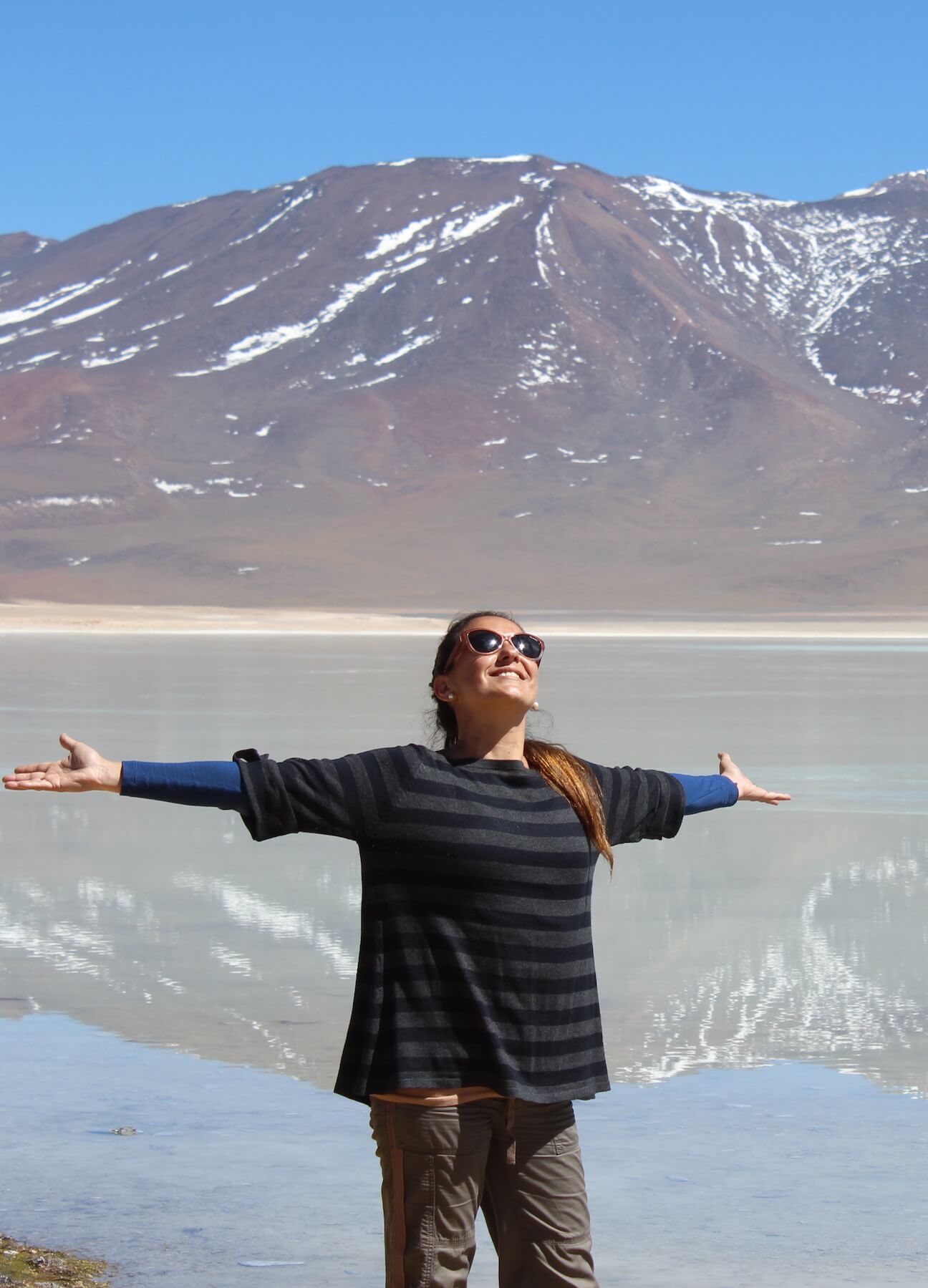
regional weather:
Summers are the warmest and wettest season in most of the country except in most of Patagonia where it is the driest season. Winters are normally mild in the north, cool in the center and cold in the southern parts experiencing frequent frost and snow.
| Jan | Feb | Mar | Apr | May | Jun | Jul | Aug | Sep | Oct | Nov | Dec | |
|---|---|---|---|---|---|---|---|---|---|---|---|---|
| La Paz & Titicaca |  |
 |
 |
 |
 |
 |
 |
 |
 |
 |
 |
 |
| Uyuni Salt flats |  |
 |
 |
 |
 |
 |
 |
 |
 |
 |
 |
 |
| Sucre & Potosi |  |
 |
 |
 |
 |
 |
 |
 |
 |
 |
 |
 |
Amazon & Santa Cruz |  |
 |
 |
 |
 |
 |
 |
 |
 |
 |
 |
 |
Bolivia Info
Capital City: La Paz
Currency: Bolivianos
Language: Spanish
In the country there are coins of 10, 20 and 50 cents and also 1, 2 and 5 Bolivianos. The bills have the following values: 10, 20, 50, 100 and 200. In the main cities of the country, the traveler will be able to change foreign currency-mainly US dollars- without any inconvenience. In La Paz, Sucre, Cochabamba and Santa Cruz de la Sierra, there are many “Casas de Cambio” – that are safer and offer a better guarantee in the transaction – and street cambistas that are not completely reliable. Travelers Checks tend to receive much lower exchange rates than U.S. Dollars, meaning you lose money in the exchange. Travelers Checks are also not accepted in many places
Mayor credit cards are accepted in the most important hotels, restaurants and commercial centers, however the same thing doesn’t happen in the smallest establishments neither in the remote towns. In general, Mastercard, Diners, Visa and American Express are very well acceptable.
We recommend visiting the website XE Currency Converter to get current exchange rates.
Customize Your Client's Experience
Our eight local Offices in Latin America give us the perfect base to offer your travelers an unrivaled experience with a wide selection of bed & breakfasts, small posadas, unique boutique hotels and world class luxurious lodging; you and your clients are able to design an authentic experience that meets both their comfort level, budget and expectations.
practical information
SAFETY
Despite being among the poorest countries in the region, Bolivia has very low levels of theft and violent crime. That being said, you should always be careful: do not have your valuables out in the open and travel with some clear common sense. Despite being among the poorest countries in the region, Bolivia has very low levels of theft and violent crime. That being said, you should always be careful: do not have your valuables out in the open and travel with some clear common sense.
VACCINATIONS
Some parts of Bolivia like La Paz (3650), Potosí (4010), Oruro (3950) and the Lake Titicaca region are situated at high altitudes, so adequate precautions against altitude sickness should be taken. Eat little, drink a lot; also sweets (sugar) help as well as coca leaves, which you can buy everywhere and are reputed to be useful against “soroche” (altitude sickness). Drinking bottled water and eating well-cooked food is strongly recommended. Bolivian drinking water -even in populated areas- often contains amoebae and parasites. In order to enter Bolivia, visitors must have previously received the international vaccine against Yellow Fever.
VISA
Nationals of the USA and the EU do not require a visa to enter Bolivia and are granted a 30 day travel visa upon arrival. Citizens of other countries may require a visa to enter Bolivia and it is generally advised that they contact the Bolivian embassy in their home country for information.The Wikipedia Visa Policy of Bolivia is a great starting point to begin exploring whether or not any particular nationality might need to obtain a tourist visa to visit Peru.
ELECTRICITY
Bolivia runs on 220 volts AC, 60Hz cycles. Some 4 and 5 Star hotels may have 110 volt outlets but this is not always the case. Make sure the electrical appliance you are plugging in is compatible with Bolivian power. If not it is very easy to buy both transformers and adapters within stores across the country.
FAMILY TRAVEL IN BOLIVIA
Bolivia is a must-see destination for all nature lovers and those who are passionate about culture and adventure. It is not a destination that is in any way prepared for luxury seekers, and is best enjoyed by travelers in good physical condition, with minimum comfort expectations. As many Bolivians do not speak English, it is recommended to have a basic knowledge of Spanish at least. Traveling through the country with small children is not recommendable: climate conditions, altitude and food conditions make it a difficult country to travel through for families. Minimum age we recommend is 14 years.
GETTING AROUND BOLIVIA
Getting around in Bolivia can be pretty challenging. Most of the roads are unpaved and public transport (although it will give you a true Bolivian experience) can be cumbersome to say the least. Flying is the most comfortable option and for sure our recommendation for longer distances. However between some cities your only option will be local transport (Uyuni – Potosi and Sucre – Potosi for instance). Wherever you can, book a tourist class bus (the more comfortable seats), which are not only a bit less Spartan, but will also save you several hours because they make less stops. Whichever way you travel, expect delays and long journeys, but it will be worth your while…
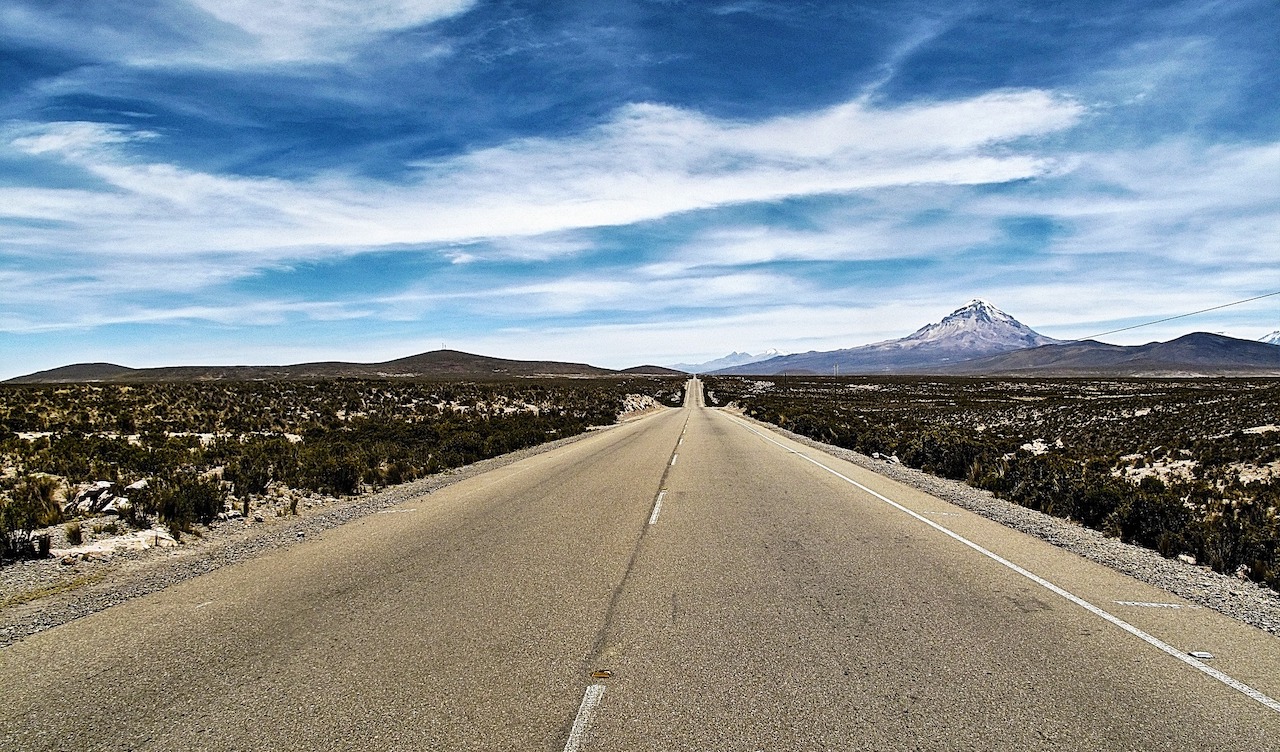
our countries
With eight local offices in Latin America, we have the perfect base to help you build the perfect trip for your clients. Unrivaled experience with a wide selection of bed & breakfasts, small posadas, unique boutique hotels and world class luxurious lodging.


